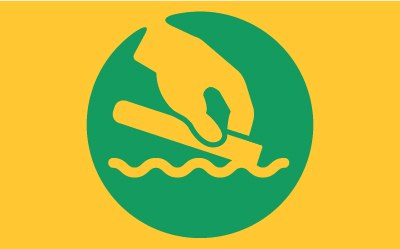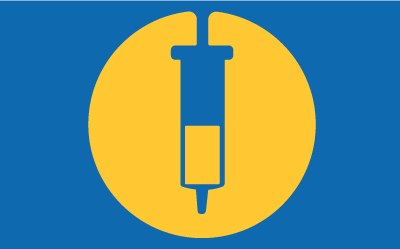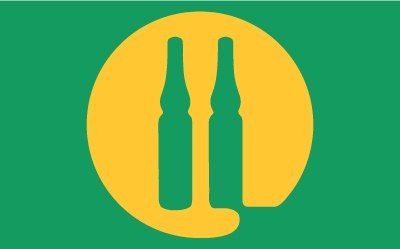PFAS Testing Solutions
Any matrix, any method, any time.
Solutions for Per- and Polyfluoroalkyl Substances (PFAS) Analysis
Perfluoroalkyl substances (PFAS) are human-made organofluorine compounds known as "forever chemicals" due to their exceptional resistance to environmental degradation. Because of this persistence, these substances can reach concentration levels dangerous for human exposure, potentially causing low infant birth weights, immune system dysfunction, cancer, and thyroid hormone disruption.
As part of our commitment to making the world a safer place, we have focused on developing environmental monitoring and biomonitoring tools for more accurate PFAS quantification. Our solutions empower researchers trying to better understand the effects of PFAS, as well as regulators and labs focused on providing ongoing exposure testing services.
Discover our testing products organized by PFAS analytical methods.
PFAS Testing Workflow Tools
Sample Collection

Sample Preparation

Standardization and Calibration

Analysis

ASTM D7968
ASTM D7979
CDC 6304.09
CEN/TS 15968:2010
EPA 533 - For UCMR-5
EPA 537.1 - For UCMR-5
EPA 8327
EPA 1633
FDA C-010.02
ISO 21675
ISO 25101
OTM 45
RELATED PRODUCT RESOURCES
- Flyer: NEW – PTFE-Free Visiprep™ SPE Vacuum Manifolds, Suitable for PFAS Testing Workflow
- Brochure: Solutions for PFAS Testing
- Flyer: Ascentis® Express PFAS Columns
- Flyer: PFAS Reference Materials
- Flyer: UHPLC-MS Solvents tested for PFAS analysis according to EPA 533 and EPA 537.1 methods
- Webinar Q&A: Expanding PFAS analysis beyond environmental matrices
Related Technical Articles
- LC-MS Analysis of PFAS Compounds in EPA Method 533 using Supelclean™ ENVI-WAX™ SPE
Learn how method EPA 533 is used for sample collection and preparation, featuring Supelclean™ ENVI-WAX™ SPE cartridges for LC-MS analysis on an Ascentis® Express PFAS HPLC Column.
- LC-MS/MS Analysis of 16 PFAS in Salmon Using QuEChERS Based on FDA Method C-010.02
Find more about the analysis of 16 PFAS in salmon via QuEChERS extraction and LC-MS/MS characterization following FDA Method C-010.02.
- LC-MS/MS Analysis of 16 Per- and Polyfluoroalkyl Substances (PFAS) in Milk Using QuEChERS Based on FDA Method C-010.02
Discover an LC-MS/MS method for the analysis of 16 per- and polyfluoroalkyl compounds (PFAS) in milk using QuEChERS extraction technique following FDA C-010.02 guidelines.
- Quantitative Analysis of PFAS in Drinking Water by LC-MS/MS according to GB 5750.8-2023
Simultaneous determination of 27 PFAS chemical compounds after enriching the water samples with SPE using a Supelclean® ENVI-WAX weak anion exchange tube.
- LC-MS Analysis of PFAS Compounds
LC-MS method separates 32 PFAS compounds in drinking water following EPA methods 533, 537, and 537.1. EPA 8327.
- Fast and High-Resolution LC-MS Separation of PFAS
Liquid Chromatography–Mass Spectrometry (LC-MS) separation of 33 PFAS (Per- and poly-fluoroalkyl substances) using a superficially porous silica particles (SPP) based Ascentis® Express C18 column.
- PFAS Testing Methods and Guidance for Sample Filtration
Validation of Millex® PES syringe filters in PFAS testing of water samples using EPA method 537.1.
- Analysis of PFAS Extractables in Glass Fiber Membrane Filters After OTM-45 Front-Half Extraction
Data and recommended filtration products for OTM-45 Method for Air Monitoring of PFAS Compounds.
- Analysis of PFAS Extractables in Filtration Products Using Modified EPA 537.1
View data on fluorinated extractables, recovery, and recommended filtration products for PFAS testing using Modified EPA 537.1.
- Analysis of PFAS Extractables in Filtration Products Using Modified EPA 1633
Data and recommended filtration products for PFAS testing using Modified EPA 1633.
- Obtaining Ultrapure Water for Sensitive PFAS Analysis by LC-MS
Sensitive PFAS testing can be performed with ultrapure water from a Milli-Q® IQ 7 system, which eliminates detectable PFAS for reliable LC-MS/MS results. See the science, see the proof.
Related Webinars
Per- and polyfluoroalkyl substances (PFAS) are included in the monitoring list of drinking water contaminants across the globe due to their potential negative impact on human health. Commonly, those compounds are monitored with LC–MS(/MS) based methods.
PFAS is increasingly becoming a household term as more headlines reach more and more of the population. Although aqueous samples still make up the majority of PFAS tests, solid samples are generally increasing in numbers and aren’t limited to soils and sediments.
In the analytical testing industry, instruments are becoming more sensitive, and methods demand higher data quality. There are many factors to consider for achieving robust data using liquid chromatography tandem mass spectrometry (LC-MS/MS), including sample preparation.
Learn how to control PFAS background contamination in solvents, review findings from a recent study, and get tips for solvent selection.
Get tips on how to obtain the best water quality from your purification system for reliable and accurate PFAS analyses by LC-MS.
Where are most PFAS found and tested?
Environmental testing and PFAS
Perfluoroalkyl substances have been used for decades across many sectors and in countless products because of the utility they offered. This widespread usage has resulted in PFAS compounds now being found in watersheds, soils and in some instances the compounds can be found in the air we breathe.
Because of its ubiquitous presence and the growing understanding of the adverse health effects of exposure; nations around the world are starting to implement tighter regulations to limit future use of PFAS compounds, measure the full scope of the problem and undertake the monumental task of remediation.
Accurate measurement of PFAS compounds in diverse matrices will be an integral part of all of these efforts.
Clinical testing and PFAS
Most people have been exposed to PFAS and there are increasing concerns due to their extreme persistence, its bioaccumulation and its links to adverse human health effects. Multiple studies have investigated these concerns and organizations such as National Health and Nutrition Examination Survey (NHANES) has measured blood PFAS in the U.S. population since 1999. In Europe PFAS is one of the 18 HBM4EU priority substance groups investigated by HBM4EU to better understand exposure and effects on health. Possible health impacts include:
- Increased risk of kidney or testicular cancer
- Decreased vaccine response in children
- Increased risk of high blood pressure or pre-eclampsia in pregnant women
- Small decreases in infant birth weights
- Increased cholesterol levels
- Changes in liver enzymes
Human monitoring has shown a decline in PFOS and PFOA in the US, as these products have been phased out, but concerns remain about exposure to the newer replacement PFAS.
PFAS testing for food and beverages
Over recent years growing consumer awareness and concern of potential PFAS contamination levels in the general food supply have led to increased activity of identification and quantification of these chemicals in food products and packaging that are sources of exposure to consumers. Public health advocates are urging the food industry to act sooner rather than later due to health risk concerns. Along these same lines there are many in the food industry pledging to phase out the use of PFAS in packaging, food processing, food contact materials, and manufacturing. The general food supply is a complex dynamic of inputs and outputs that are all interconnected not just domestically but globally in today's world. PFAS is a regulated chemical in the food industry known to be used for its non-stick and grease, oil, and water-resistant properties it yields. PFAS chemicals are known to bioaccumulate and at certain thresholds adverse health effects can occur. The ways PFAS chemicals enter the food supply are:
- Agri Food (crop and livestock bioaccumulation from contaminated soil and water)
- Food Packaging (extractables and leachables directly into the product)
- Food Contact (manufacturing and processing equipment, cookware)
- Food and Beverage Waste-streams (contaminated waste accumulating in landfills)
Testing of PFAS chemical contaminants will not simply disappear with phasing out of their use in the food industry. The implications of their past use will be cause for consumer health concerns for the foreseeable future of these “forever chemicals”.
Cannabis and PFAS testing
Though cannabis and hemp can be grown using a variety of techniques, outdoor field-based cultivation is the most common for hemp due to relative cost and scale of operations. However, hemp plants have strong phytoremediation properties, with capabilities to extract heavy metals and other toxic contaminants from soil. Due to these properties, industrial hemp has historically been used for cleanup of radioactive isotopes, including in the aftermath of the 1986 Chernobyl nuclear meltdown. Recent studies suggest that planting fibrous hemp at polluted sites is also a viable means for PFAS removal. It was shown that hemp plants offer superior removal for PFAS in contaminated groundwater out of many plant varietals explored1.
When cannabis and hemp is grown outdoors, particularly in regions where forest fires are common, PFAS can potentially be introduced to the plants through use of flame-retardants, or through contaminated groundwater. Therefore, there is emerging interest in analyzing cannabis and hemp plants and their derived products for PFAS to ensure safety of final products for end-consumers.
PFAS in Cosmetics
PFAS in cosmetics may pose a risk to human health through direct and indirect exposure, as well as a risk to ecosystem health throughout the lifecycle of these products. In a recent study2 of 231 commonly used cosmetics, researchers at the University of Notre Dame detected high levels of fluorine (an indicator of PFAS) in 63% of foundations, 55% of lip products, and 47% of mascaras. In the US, the FDA is monitoring this topic and a bill has been introduced recently, “No PFAS in Cosmetics Act”. California passed a toxic-free cosmetics act, which bans PFAS from cosmetics and personal care products sold or made in the state. The European Commission regulation on cosmetic products is going to be revised by the end of 2022 and actions on PFAS are expected.
Reference
1. Turner BD, Sloan SW, Currell GR. Novel remediation of per- and polyfluoroalkyl substances (PFASs) from contaminated groundwater using Cannabis Sativa L. (hemp) protein powder. Chemosphere. 2019;229:22-31. doi:10.1016/j.chemosphere.2019.04.139
https://pubmed.ncbi.nlm.nih.gov/31071516/
2. Whitehead, HD, et al. Fluorinated Compounds in North American Cosmetics. Environ. Sci. Technol. Lett. 2021;8:538-544.
https://pubs.acs.org/doi/pdf/10.1021/acs.estlett.1c00240
To continue reading please sign in or create an account.
Don't Have An Account?